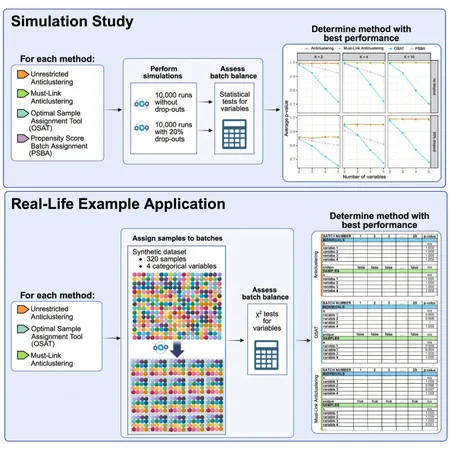
Revolutionizing Medical Research: New Anticlustering Method Tackles Data Challenges in Endometriosis
2025-08-18
Author: Wei
A Game-Changer for Medical Data Analysis
In the intricate world of medical data analysis, avoiding the formation of unwanted clusters is crucial. Addressing this challenge, researchers from Heinrich Heine University Düsseldorf and the University of California, San Francisco have pioneered a groundbreaking anticlustering method. This innovative technique, unveiled in 2020, has recently been expanded to further enhance high-throughput sequencing data analysis.
Endometriosis: A Painful Condition Affecting Millions
Endometriosis is a debilitating condition that affects millions of women globally. This complex disorder occurs when tissue resembling the uterine lining grows outside the uterus, often impacting the ovaries and intestines. The presence and behavior of this tissue can change with the menstrual cycle, contributing to a host of painful symptoms.
Pioneering Research at the ENACT Center
To unravel the cellular and molecular dynamics of endometriosis, a diverse team from UCSF and Stanford University is analyzing data from hundreds of affected women as part of the ERAC Center initiative, led by esteemed Professors Linda C. Giudice, Marina Sirota, Brice Gaudilliere, and David K. Stevenson. At the forefront of this research, Dr. Tomiko T. Oskotsky focuses on ensuring robust experimental designs, especially in studies involving advanced techniques like single-nucleus RNA sequencing.
Tackling Batch Effects in Data Processing
Data samples must often be processed in batches for technical efficiency. However, imbalances—such as differences in disease stages or patient ages—can lead to 'batch effects', distorting results and obscuring true biological differences.
Introducing the Must-Link Method
The newly designed anticlustering method, spearheaded by Dr. Martin Papenberg alongside Professor Gunnar Klau, offers a robust solution to this dilemma. Their approach, featured in 'Psychological Methods', is now available free of charge. Dr. Papenberg emphasizes the importance of grouping related samples—like multiple tissue samples from the same patient—within the same batch, allowing for meaningful comparisons.
Maintaining Research Integrity
Professor Klau highlights the successful expansion of their methodology, which allows samples that need to stay together to be systematically sorted while ensuring balance across batches. This meticulousness helps eliminate methodological bias, enabling medical researchers to draw precise conclusions regarding genetic influences on endometriosis.
Towards Transformative Biomedical Insights
Professor Oskotsky expresses confidence that utilizing the anticlust method will minimize batch effects and accurately represent biological realities in their molecular data. This novel approach not only sheds light on endometriosis but also exemplifies how well-designed computational techniques can dramatically elevate biomedical research.



 Brasil (PT)
Brasil (PT)
 Canada (EN)
Canada (EN)
 Chile (ES)
Chile (ES)
 Česko (CS)
Česko (CS)
 대한민국 (KO)
대한민국 (KO)
 España (ES)
España (ES)
 France (FR)
France (FR)
 Hong Kong (EN)
Hong Kong (EN)
 Italia (IT)
Italia (IT)
 日本 (JA)
日本 (JA)
 Magyarország (HU)
Magyarország (HU)
 Norge (NO)
Norge (NO)
 Polska (PL)
Polska (PL)
 Schweiz (DE)
Schweiz (DE)
 Singapore (EN)
Singapore (EN)
 Sverige (SV)
Sverige (SV)
 Suomi (FI)
Suomi (FI)
 Türkiye (TR)
Türkiye (TR)
 الإمارات العربية المتحدة (AR)
الإمارات العربية المتحدة (AR)